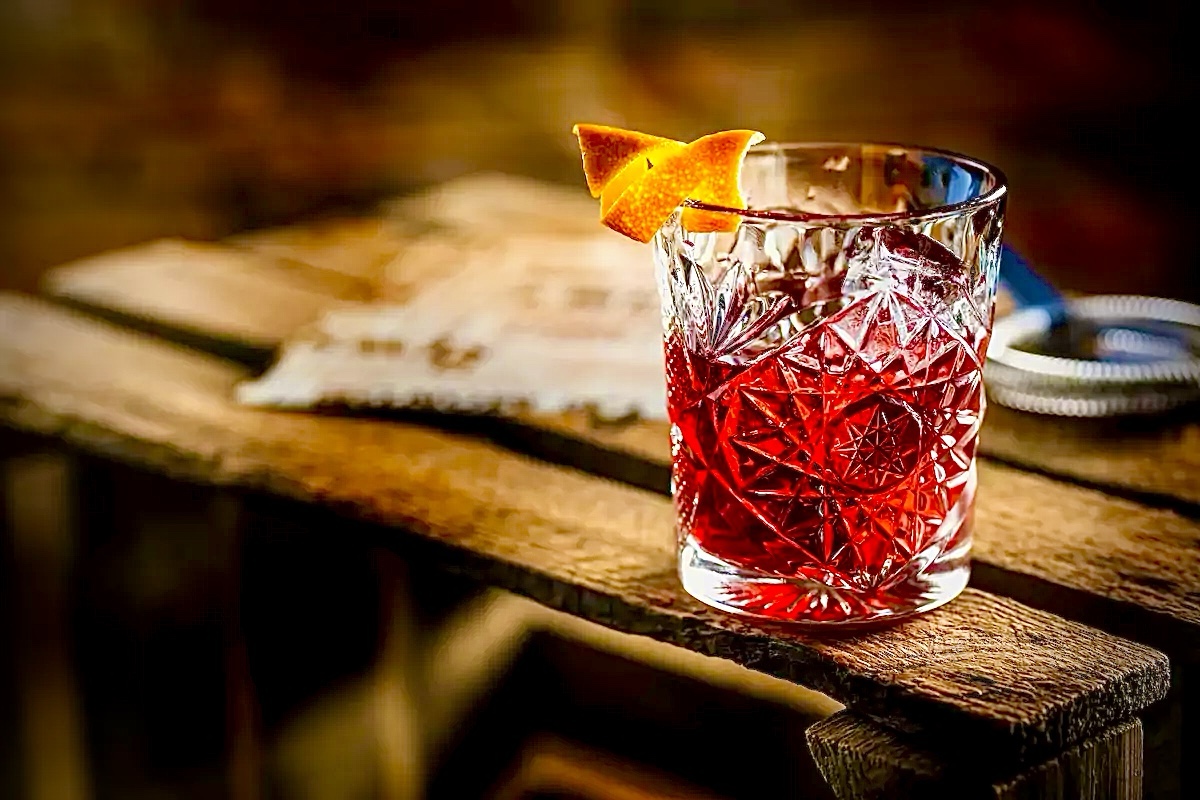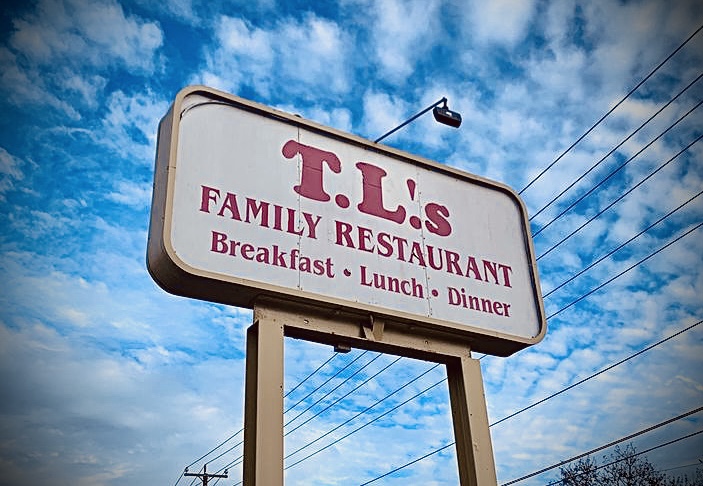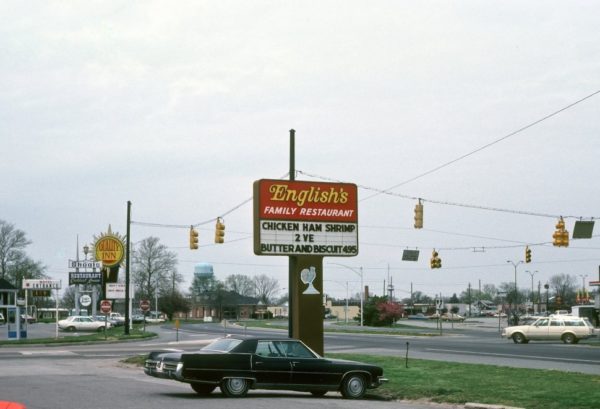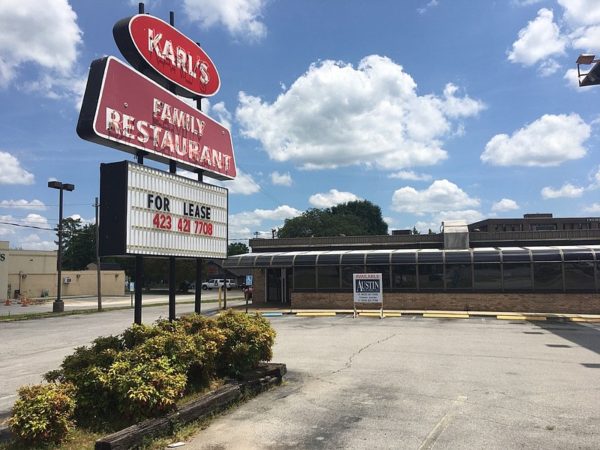I don’t need my Negronis to be fancy. You can keep your boutique small batch bitters from Brooklyn that uses organic cochineal from Peru. Campari is just fine for me. After years of being inundated with countless Negroni variations — coconut fat-washed Negronis, cold brew coffee Negronis, Cosmogronis, Negronis named after every city in the world, white Negronis, black Negronis, green Negronis, and Negroni foam — it’s safe to say we’ve reached peak Negroni. I actually stumbled upon one Negroni recipe recently that calls for the batched cocktail to be steeped in Cocoa Puffs for 24 hours.
I had an epiphany earlier this year when I attended a swanky Campari event with various cocktail stations manned by a Who’s Who of celebrity bartenders including Dale DeGroff, Don Lee, and Julie Reiner. After sampling various different Negroni expressions — a chocolate Negroni, a vintage Negroni, a mezcal Negroni Jell-O shot, and Negroni cotton candy — I retreated to the station that was serving the plain old classic Negroni. It felt like stopping at a Gatorade station on a marathon course. I hate to sound like such a purist, but the classic Negroni was just perfect the way it was. It was by far the best cocktail I had that night, a simple recipe made from three equal parts (Campari, gin, and sweet vermouth) that play well together and don’t need to be micromanaged.
All of this had me wondering if our fixation with the Negroni has gone too far, resulting in bartenders tinkering with the template too much. The White Negroni, which has become a modern classic, is a nice drink, but without Campari it’s technically not a Negroni. Bon Appetit recently lauded the frozen Negroni as “a better Negroni.” Aside from the fact that it’s a blended drink, the recipe calls for orange juice, a heretical twist that corrupts the spirit-forward profile that has long been the Negroni’s calling card. There’s nothing wrong with creating riffs on classics. But is there a point where the experimentation gets out of control, and the DNA of the original drink is lost?

The cocktail writer and bitters expert Brad Thomas Parsons asked the very same question last year in an article for VinePair. “Are we at a place when a Negroni, in name, strays too far from the original template to risk diluting the spirit of the original drink and all it embodies?” Parsons asks. “What is the tipping point when a Negroni is no longer a Negroni?” Not every bartender he interviewed was as dogmatic about showing respect for the original Negroni recipe as I am, but almost all of them believed that it made sense to lay down some guardrails (like using Campari or a Campari-like proxy, for example).
I can distinctly remember the first time I took an order for a Negroni as a young waiter in the late ‘90s. I’d never heard of the drink before. Neither had the bartender. We didn’t have touchscreen phones in our pockets with access to every cocktail recipe known to man on the Internet at the time, so of course he needed to consult the tattered Mr. Boston book behind the bar. After finding the recipe, he dusted off the sticky Campari bottle that probably hadn’t been opened in years and pulled the oxidized vermouth from the back of the lowboy. I marveled at how the drink looked like a high school chemistry experiment made with phenol red or a glass of cherry flavored Kool-Aid. The old head who ordered it was pleased. No one used large square ice cubes back then, so there wasn’t much he could complain about.
How the Negroni became hipsterized in the ensuing decades is a more complicated story. The drink on its own doesn’t have much populist appeal. Perhaps, the public had grown tired of drinking syrupy sweet Cosmos and Lemon Drops. By the early 2000s, the craft cocktail movement was influencing mainstream drinking habits, and the public was embracing more bitter flavors. The Negroni had also become a secret handshake among restaurant industry types, who had already adopted the cocktail as the anti-Cosmo before it went mainstream. The availability of higher quality vermouths like Carpano Antica, Dolin, and Noilly Prat made Negronis more complex and drinkable.
Meanwhile today, craft gins, small batch vermouths, and Campari clones have flooded the market with boutique ingredients that, when combined, often make inferior Negronis. Many of these gin recipes have exotic botanicals and regional flavorings which are too busy to work in the traditional Negroni template that favors a London Dry. Nonetheless, we now have an entire week dedicated to Negronis. While “Negroni Week” has noble philanthropic underpinnings (it raises money for Slow Food International), the whole affair still feels like a giant PR gambit by Campari. The gambit’s paid off, Campari sales have risen by almost two million cases since 2009, almost doubling its sales to 4.5 million cases in 2022. The product’s astronomical growth in recent years would not have been possible without the rising popularity of the Negroni.
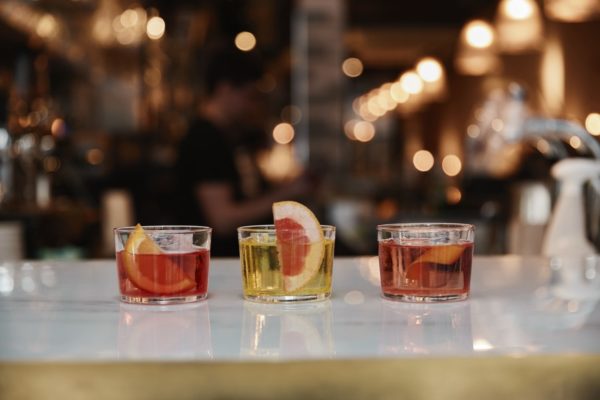
I do believe there’s still room for experimentation and creativity with the Negroni template. One of my favorite examples is the Sour Cherry Negroni at Hawksmoor in New York City. The recipe, by maintaining the core trio of ingredients, hews tightly enough to the classic version that it honors the drink rather than reinterpreting it. But the addition of acid-adjusted cherry juice accentuates the natural tart red fruit of Campari, and a wisp of Tempus Fugit’s Crème de Noyaux (liquer made from apricot and cherry pit kernels) rounds out the flavors with a base note of nutty marzipan. The cherry element is subtle and surprising, but you still feel like you’re drinking a Negroni.
In recent years, we’ve driven the Negroni off a cliff with an obsessive need to create yassified versions. The biggest names in the bar world have weighed in with their own interpretations like the Negroni Tredici (Tony Maloney), the Jitney Negroni (Leo Robitschek), the Sweet Milk Tablet Negroni (Ian Griffith), and, even a Negroni that goes into the microwave, the Nuked Negroni (Ryan Chetiyawardana). Perhaps it would be less unnerving if bartenders would simply stop naming their Negroni riffs after the Negroni, especially when many of these recipes hardly resemble the original. There’s a reason that some of these classic cocktails like the Negroni have stood the test of time. Reinventing the wheel doesn’t necessarily make the car go farther or faster. The constant need to reinvent the Negroni often makes this car feel like it’s going in reverse.

